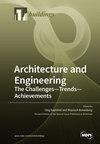制定基于健康的校舍过热限制标准
IF 3.1
3区 工程技术
Q2 CONSTRUCTION & BUILDING TECHNOLOGY
引用次数: 0
摘要
校舍过热会对认知学习能力产生负面影响,尤其是对体温调节系统尚处于发育阶段的青少年学生。然而,目前在学校中,与过热有关的问题已经通过限制暴露在热不适环境中的时间得到了解决。本文介绍了一个通用程序的开发过程,该程序结合了建筑和生物热模拟,用于评估学校过热风险,并生成基于健康的过热限制标准,该标准可应用于加拿大的学校。我们以一所小学的校舍为基础,创建了新旧通用的校舍模型,并利用室内温度和湿度的实地测量数据以及已公布的建筑能源使用强度数据进行了成功校准。通过限制学生在极端过热事件中的身体脱水程度,制定了三套分别针对小学、初中和高中学生个人暴露条件的限制标准(暴露持续时间和过热严重程度)。将建议的极限标准与超标小时数标准进行比较,发现两者之间存在有趣的关系,这表明建议的极限标准可作为基于舒适度标准的基准,特别是对较脆弱的小学和中学而言。建议的程序和获得的过热极限标准可用于任何实地或模拟研究,以评估在任何当地主要气候条件下类似校舍的过热风险。本文章由计算机程序翻译,如有差异,请以英文原文为准。
The Development of Health-Based Overheating Limit Criteria for School Buildings
Overheating in school buildings can negatively affect the cognitive learning performance of particularly young students whose thermoregulation systems are still developing. However, currently, in schools, issues related to overheating have been addressed by limiting the exposure time to thermal discomfort. In this paper, the development of a general procedure that combines building and bioheat simulations to evaluate overheating risk in schools and generate health-based overheating limit criteria that may be applied in Canadian schools is described. General school building models, having either old or new constructions, were created based on a primary school building and successfully calibrated using field measurements of indoor temperature and humidity and published building energy use intensity data. Three sets of two limit criteria (exposure duration and severity of overheating) that account for the personal exposure conditions of students in primary, middle, and secondary schools were developed by limiting the body dehydration of students during extreme overheating events. Comparing the proposed limit criteria with the hour of exceedance criterion revealed interesting relationships between them, suggesting the proposed limit criteria as a benchmark for the comfort-based criteria, particularly for the more vulnerable primary and middle schools. The proposed procedure with the obtained overheating limit criteria is intended to be applied in any field or simulation study to assess the risk of overheating in similar school buildings under any local prevailing climate.
求助全文
通过发布文献求助,成功后即可免费获取论文全文。
去求助
来源期刊

Buildings
Multiple-
CiteScore
3.40
自引率
26.30%
发文量
1883
审稿时长
11 weeks
期刊介绍:
BUILDINGS content is primarily staff-written and submitted information is evaluated by the editors for its value to the audience. Such information may be used in articles with appropriate attribution to the source. The editorial staff considers information on the following topics: -Issues directed at building owners and facility managers in North America -Issues relevant to existing buildings, including retrofits, maintenance and modernization -Solution-based content, such as tips and tricks -New construction but only with an eye to issues involving maintenance and operation We generally do not review the following topics because these are not relevant to our readers: -Information on the residential market with the exception of multifamily buildings -International news unrelated to the North American market -Real estate market updates or construction updates
 求助内容:
求助内容: 应助结果提醒方式:
应助结果提醒方式:


